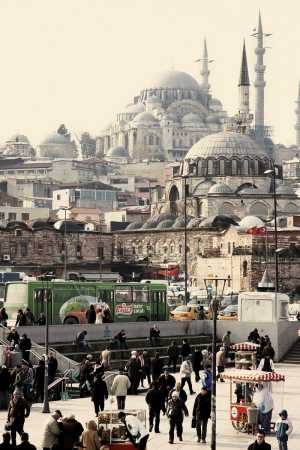The Ottoman Empire’s greatest travel writer captured a peak moment in Islamic civilization.
(Page 1 of 2)
ottomon-empire-melik-OV12-vl Shane McCauley / Gallery Stock

Evliya Çelebi relates a magical version of the Islamic empire.
There are important reasons why we should all learn more about life during the Ottoman Empire. It was the last era in which a sultan-caliph, a sort of Islamic emperor-pope, held sway over virtually the entire Muslim geosphere. Many Islamists today explicitly yearn for the return of such a unified Muslim super-state. At the Ottoman Empire’s zenith, roughly between 1600 and 1700, Sharia dominated human affairs from India to Morocco and deep into Europe, stopping just short of Vienna. That era could furnish clues to what it might be like again if the Muslim Brotherhood and its ilk gain widespread momentum. Furthermore, with Turkey’s Prime Minister Recep Tayyip Erdogan banging on about his party’s “neo-Ottoman” approach to foreign policy, it behooves us to know what coherent world view, if any, he and other nostalgists are drawing on for their grand designs.
The most exhaustive chronicle of the Ottoman world and environs was recorded by Evliya Çelebi (b. 1611), a figure celebrated in the Muslim world as one of history’s greatest travel writers, on par with Ibn Battuta and Marco Polo. A Turk born in Istanbul to a privileged court family, Çelebi traveled for about 45 years, from 1640 up to the year he died in Cairo. He spent those decades crisscrossing the sultan’s dominions, completing pilgrimages to Mecca and Jerusalem and even entering “infidel” Vienna as an ambassador. A native Istanbullu, his intricate portrait of the costumes and conventions of his hometown remains the richest source text for historians. He wrote 10 long volumes of his Seyahatname, or travelogue, in the ornately archaic Arabic-scripted Ottoman language of his day, a language as remote to modern Turks as Latin to Italians. Turks know all about him, name parks after him, but very few read him at any length.
A volume of outtakes from his work, titled An Ottoman Traveller: Selections From the Book of Travels of Evliya Çelebi, was recently published to coincide with the 500th anniversary of Çelebi’s birth. Selected and translated by Ottoman experts Robert Dankoff and Sooyong Kim, it gives us the most accessible glimpse to date into Çelebi’s text, itself a window onto a highly cultivated sensibility living at a peak moment in Islamic civilization. Çelebi embarked on his travels two years after the brutally efficient Sultan Murat IV reconquered Baghdad from the Persians in 1638. (The honorific title of Çelebi denoted a gentleman or esquire of Sultan Murat’s era, and indeed the ancestors of Iraqi politician Ahmad Chalabi originally came from Turkey with the sultan’s invasion forces.) In various campaigns Murat had stamped out revolts in Anatolia and stabilized the empire’s borders. The ensuing order made the Seyahatname possible, though Murat died the same year that Çelebi set out.
The book can be enjoyed on many levels—for its descriptions of towns, natural wonders, and ancient monuments such as the Parthenon and the Kaaba; for its Sufi-dervish notions of “mystical” love; for its nutty take on history, such as the bios of Jesus and Plato; and for the pleasant company of its unreliable narrator. But one’s first reaction is to marvel at the utter strangeness of the world on view. From Istanbul’s guilds of lion tamers and snow procurers to sorcerers and torturers in far-flung provinces, the unfolding panorama teeming with marvels and superstitions seems closer to the world of antiquity than to our own day.
via The Arab World’s Greatest Travel Writer – Newsweek.

Leave a Reply